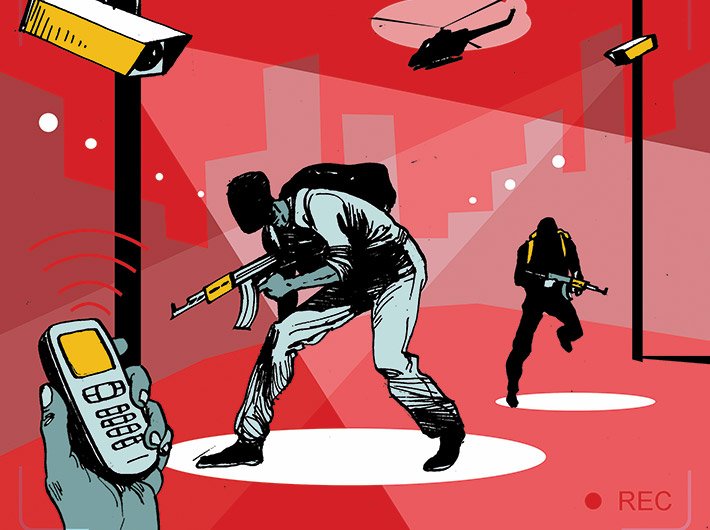Summer is generally a frenzied time for forces hunting terrorists in Kashmir. Each season, a fresh crop of trained-in-Pakistan jihadis arrive in the Valley – the numbers can vary as per the Indo-Pak equations and border security at a given time – to undertake dramatic terror strikes. They don’t always succeed but when they do – like the June 26 strike in Pampore in which two terrorists killed eight CRPF men and injured 22 – it wakes up the Indians to the challenge of fighting terrorism.
Instead of dabbling in jingoism and hyper-nationalism – which our leaders and some TV anchors are really good at – let us, as a nation, learn our lessons from the Pampore attack. Lesson number one is that Pakistan remains a perennial source of terrorism for India. The country has not given up its strategy of giving death by thousand cuts to its eastern neighbour. Pakistan brazenly continues to carry out its proxy war in Kashmir and conveniently washes its hand of the responsibility by saying that it cannot control its non-state actors. We have to devise a clear and firm strategy to deal with this reality.
Pampore had so far been famous for its fragrant and aromatic saffron crop. But now onwards the name should keep reminding Indian policymakers that handling a rogue neighbour remains their biggest foreign policy challenge. They need to work on some out-of-the-box ideas to contain Pakistan’s terror factories.
The Pampore strike was executed and openly claimed by Lashkar-e-Taiba, a group of jihadis raised in a grandiose seminary at Muridke, near Lahore, which is headed by the infamous Mumbai blast mastermind Hafiz Saeed. Hazif moves around in Islamabad’s top echelons without any fear and openly dares India and America to touch him. Can we do something tangible to close down this seminary and make Hafiz face trial in a court of law, be it in Hague, Delhi or even Islamabad?
Those who follow Kashmir regularly were shocked by the precision of LeT’s Pampore strike. It was executed in minimum possible time and with most dramatic results. I hope somebody in North Block has noticed the improved skills of the terrorists and started consultations on raising our preparedness accordingly. This time, let us hope, the matter would not end with the ministry of home affairs demanding a customary report on the Pampore strike – making counter-terrorism operations appear like the tenuous relation between a master and his subjects.
Another aspect of the Pampore attack is the active role played by local over-ground workers (OGWs) in arranging logistics, including the last-minute car drop for the two terrorists, that unfortunately is not talked about by those working on the counter-terror strategy in Delhi and Kashmir. Security forces have laid down their lives in fighting terrorists but the governments dare not even touch the OGWs. When will we dismantle our desi support networks for terrorists?
Pampore also raises the question about the preparedness of forces to face modern-day challenges like terrorism. CRPF, in particular, is battling insurgency and terrorism in many hot zones, be it in the Maoist red zone or Kashmir. It has been asking for better work conditions and equipment, including bulletproof vehicles for movement of troops, for years. In this case, had the CRPF men been travelling in a fortified bus – even improvised ones – the casualties would have been minimal. Time has come for India to realise that to eliminate the last of the terrorists, the forces have to be provided with equipment and technology. This is no less important than the Swachh Bharat campaign.
In the aftermath of the attack, there was a blame game between the army and the CRPF to point out the lapses in surveillance of the highway. This is highly avoidable. The matter should have been sorted out in the war room of the unified command at Srinagar’s Badami Bagh cantonment.
Overall, we need to remember that today’s Kashmir is the ground for a unique political experiment. Two political entities which were as different as chalk and cheese have formed a government together, and a Muslim woman heads the coalition government at a time when the hardliners are trying to firm up their control on society. The terrorists would have all the reasons to create havoc in Kashmir to undermine Indian democracy. India’s politicians have to see through this game plan and behave in a certain way while dealing with intricacies of the Kashmir situation.
aasha@governancenow.com
(The article appears in July 1-15, 2016 edition of Governance Now)

